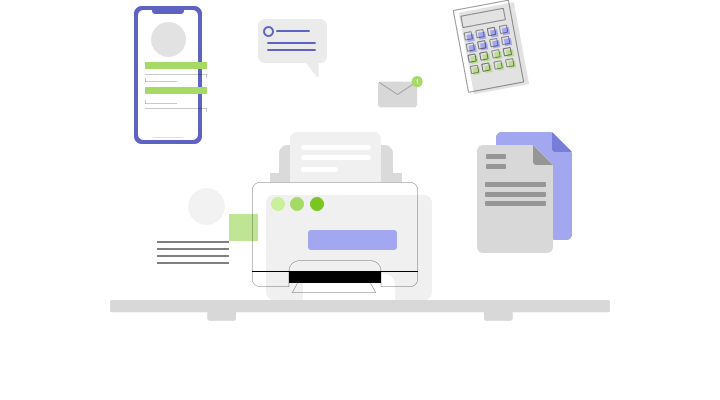
It is a prepayment received by an individual supplier or a company from a customer who ordered the delivery of goods or services at a later date. Any company or individual supplier who has received an unearned revenue has a liability equal to that “prepayment” until the goods or services are delivered. Since it is not yet earned, this revenue is like a debt owed to customers.
Where is unearned revenue on the balance sheet?
- Adjust the entry in your financial records by moving the revenue from unearned revenue on the balance sheet to earned revenue on the profit and loss statement.
- Once the product is delivered, the $100 would be recognized as revenue and the unearned revenue would be reduced by $100.
- Similarly, unearned revenue can affect the debt-to-equity ratio, a measure of financial leverage.
- Unearned revenue is not an uncommon liability; it can be seen on the balance sheet of many companies.
- First, since you have received cash from your clients, it appears as an asset in your cash and cash equivalents.
As such, unearned income can prove to be a great way of taking control of your finances while simultaneously building a is unearned revenue a current liability better future for yourself and those around you. Unearned income is exempt from Social Security and Medicare taxes, but it still affects your overall tax rate. It forms part of the calculation for Adjusted Gross Income (AGI), which takes into account all eligible deductions made above the line. Interest is a type of unearned income generated when you lend your money to people or organizations.
- Understanding and applying these principles to unearned revenue is more than a mere technical exercise.
- Such tools are particularly valuable for businesses with high transaction volumes or industries with intricate revenue recognition requirements, such as subscription services or long-term contracts.
- It could help provide a sense of financial security and make sure that you’re covered if unexpected costs arise or if anything changes with your earned income.
- Since most prepaid contracts are less than one year long, unearned revenue is generally a current liability.
- Yes, if a company is unable to deliver the promised goods or services, unearned revenue may need to be refunded to the customer.
- Then, on February 28th, when you receive the cash, you credit accounts receivable to decrease its value while debiting the cash account to show that you have received the cash.
Effect on Financial Ratios
- This is crucial for aligning financial performance with business objectives and driving sustainable growth.
- This insight can guide decisions on where to invest for growth, such as expanding product lines, entering new markets, or enhancing service offerings.
- Until you “pay them back” in the form of the services owed, unearned revenue is listed as a liability to show that you have not yet provided the services.
- Recording and reporting unearned revenue require precision and adherence to accounting standards.
- If you have earned revenue but a client has not yet paid their bill, then you report your earned revenue in the accounts receivable journal, which is an asset.
Carbon Collective partners with financial and climate experts petty cash to ensure the accuracy of our content. Go a level deeper with us and investigate the potential impacts of climate change on investments like your retirement account. Construction companies may receive upfront deposits for projects that have not started or are in progress.
Statement of cash flows

Unearned revenue is a concept in accounting that represents payments a company receives for goods or services it has yet to deliver. This financial element is essential for understanding a company’s cash flow and liquidity, as it affects the timing of income recognition and influences financial decision-making. Essentially, when the money comes in, you record it as a credit in the ‘unearned revenue’ column and a debit in your cash account. When the service is delivered and you have earned the revenue, you record another double entry with credit and debit reversed. Understanding and effectively managing unearned revenue is vital for a company’s financial health and strategic decision-making.
Income statement

Taylor Josephs is an experienced finance expert with deep knowledge of FP&A. She earned her Bachelor’s in Business Administration from the University of Wisconsin and currently resides in Minneapolis, Minnesota. Cube’s API empowers teams to connect and transform their data seamlessly.
- Understanding unearned revenue is key for finance and FP&A leaders to ensure accurate financial reporting and effective strategic decision-making.
- The patterns and trends in unearned revenue can offer insights into customer behavior and preferences.
- Baremetrics provides you with all the revenue metrics you need to track.
- This means unearned revenue is listed as a liability on your balance sheet until your business delivers the promised services or goods.
- A healthy stream of unearned revenue suggests a steady demand for your products or services.

Earned income is money that you make through a job or self-employment. In most cases, earned income is subject to higher taxes than unearned income. Unearned income is subject to federal, state, and sometimes local taxes depending on the type of income. It’s no secret that unearned income is a great way to pad your savings account. Whether it’s coming from investments, allowances, or inheritance payments, unearned income can have a lasting effect on the amount of money Accounting for Marketing Agencies you’re able to put aside. Revenue is earned when a company delivers the goods or services for which it has received payment.